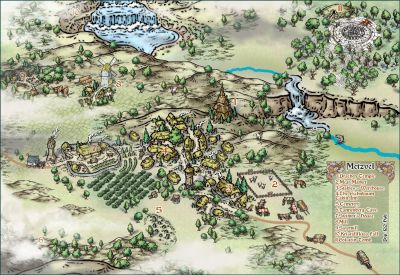
Monsen
Monsen
About
- Username
- Monsen
- Joined
- Visits
- 693
- Last Active
- Roles
- Administrator
- Points
- 8,952
- Birthday
- May 14, 1976
- Location
- Bergen, Norway
- Website
- https://atlas.monsen.cc
- Real Name
- Remy Monsen
- Rank
- Cartographer
- Badges
- 27
-
Does Size Settings Matter for Output?
It doesn't matter at all. Units in CC3+ are meant to represent real world sizes, so you make the map in 240 x 180 if it is 240 by 180 miles (or feet/meters/kilometers depending on map type) or 2400 x 1800 if it is 2400x1800 miles.
For an overland map, symbol scale will vary, as you pointed out yourself, and many drawing tools have line width expressed as fraction of map size, meaning they will vary too.
For dungeon/city maps, the larger map will give you a larger area to work with, since symbol scale don't vary with map size.
-
YAWIP: Sea Star, a Dark city seaport
I wasn't suggesting you use the actual ferraris fills, just pointed you to that style to show an example of how it can be laid out.
I guess the fills do work out there though, but I would seriously lower the scales of the fills, they're way to large the way they are now. Also, aligning the fills to follow the road (or something else) will give a more organic look rather than have them all perfectly horizontal. If you look at the ferraris style example I liked to, it also uses rows of threes/bushes on the border of the fields. This both looks good, and is often done in real life too.
-
Using CC3 Over Graphic Terrain Maps
You can just insert your image into a drawing (Using Draw -> Insert File). I recommend putting it on a dedicated sheet, so you can move the sheet up and down the stack depending on your need. Then you can just use CC3+ normally, with your image as a background.
Do remember that CC3+ isn't an image editor though, you can't do any changes yo your file, you can only put stuff on top of it.
-
How to remove white line on smooth polygon river; Herwin Wielink Style
-
Annual 1, issue 3 - Inn Map. My example after the Live Mapping session







